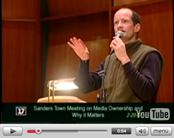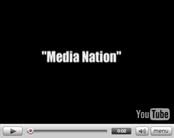THE WAR ON BUGS (Book Review)
Eating Oil: “The War On Bugs” Sounds A “Pharm Alarm” About the Toxic History of American Agriculture
By Rob Williams
Read more about this book at Chelsea Green Publishing.
East Thetford, Vermont’s Will Allen of Cedar Circle Farm is no ordinary tiller of the soil. The former marine, jailed for anti-war protests during the Vietnam Era, also possesses a Ph.D. in Anthropology, a long track record as a citizen/activist, and now, a new book brilliantly entitled “The War On Bugs.” Allen’s story is a remarkable expose, ten years in the making, that highlights the often-sordid relationship among what might be awkwardly termed “corporate agricultural interests,” Madison Avenue, and the U.S. Empire’s military/industrial complex. Let’s collectively call this trio “Big Pharm.”
As always, history is a useful starting place. In his Pulitzer Prize-winning book Guns, Germs, and Steel: The Fates of Human Societies, author Jared Diamond coined the term “farmer power” to describe the dramatic increase in land productivity (and economic and political might) that emerged with the Neolithic Revolution in agriculture roughly 10,000 years ago, a series of processes that gave us the very best and worst of human civilization. Allen’s analysis in “The War on Bugs” charts the arrival of a second agricultural revolution, which began around the time of the so-called American “Civil War” during the 1860s, when U.S.-based chemical companies declared war on two scourges: bugs of every description, and declining soil fertility.
Allen’s great strength lies in combining short and pithy analytical vignettes detailing the various tools and tactics used by an evolving “Big Pharm” industry with a cornucopia of visual material. Each chapter features fascinating historical reproductions harvested from a wide range of U.S. media – newspaper articles, old editorials from farm journals, pseudo-scientific testimonials bought and paid for by Big Pharm interests, and, of course, ever-ubiquitous advertisements (including some early head—turning work by Theodore Geisel - a.k.a. Dr. Seuss - who was employed by the chemical industry early in his career to sell Pharm toxins to an unsuspecting U.S. public. Who knew?).
What makes Allen’s work so vital is his exploration of the historical and cultural intersections among a variety of forces: Madison Avenue media marketing, science, corporate power and, most importantly, the process of “farming” itself, a complex and rigorous activity so full of mistaken mythological holes within the fabric of U.S. history that you can drive a John Deere combine harvester through it. Simply stated, farming is incredibly hard work, made more so by forces way beyond the control of individual farmers –weather, crop prices, and the price of fuel – to name but three. The great genius of Big Pharm interests, and “The War On Bugs” highlights it, comes with their use of what Allen calls a “four part sales model” to get farmers “hooked” on their products. To whit: beginning in the mid-19th century, Big Pharm editorials in various farm journals planted the seeds of interest in new chemical-intensive products and processes; scientific testimonials by so-called “experts” (often citing studies paid for by Big Pharm interests) watered the seeds; saturation advertising by well-funded marketers nurtured interest even further; and finally, farmer testimonials about “Big Pharm” success helped seal the deal.
And, let’s be honest about the results. In one sense, oil/chemical based fertilizers and pesticides ushered in a remarkable era in food productivity during these past 150 years. The only reason why today’s 21st century planet can afford to carry close to 7 billion human inhabitants is because of the so-called “Green Revolution” in agriculture. Literally, as Dale Allen Pfeiffer states, we in the West “eat oil,” as consumers eating in the midst of the most fossil-fuel-intensive agricultural system the world has ever seen. Allen’s book makes it clear that we’ve been “eating oil” for longer than most of us realize, and that the high costs of doing so – from rampant toxin-related illnesses and death; to the chemical poisoning of our air, water, and landscapes; to the centralizing of corporate commercial political and economic power – are worth considering.
It would be a mistake to romanticize small-scale subsistence farming. Perhaps more of a mistake, however, is to ignore the history and the trade-offs of Big Pharm’s “war on bugs.” If ever there was a historical argument for cultivating thoughtful localvore living, food sovereignty, and homestead security moving into the 21st century, this book is it.



![View your cart items []](/sites/default/modules/ecommerce/cart/images/cart_empty.png)




